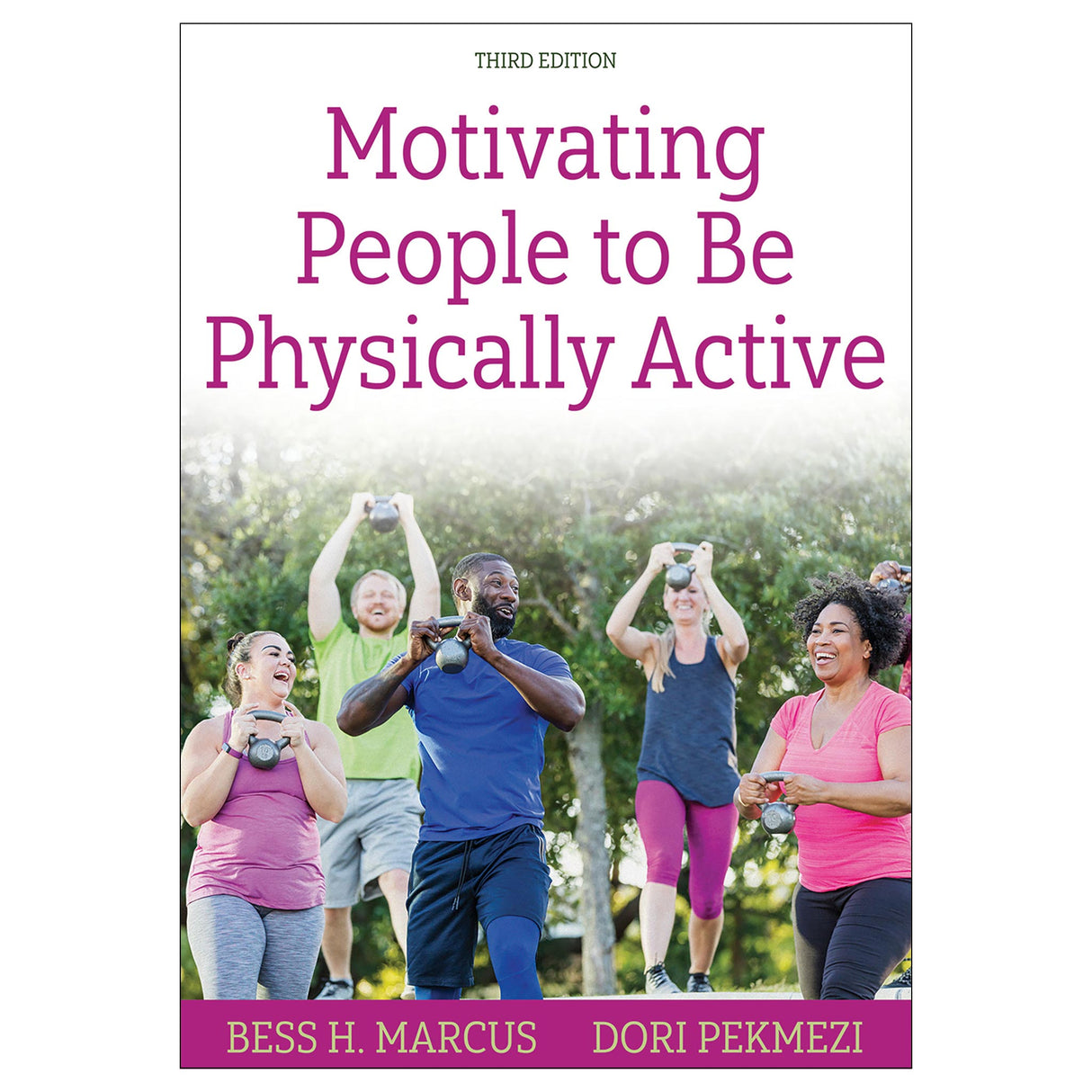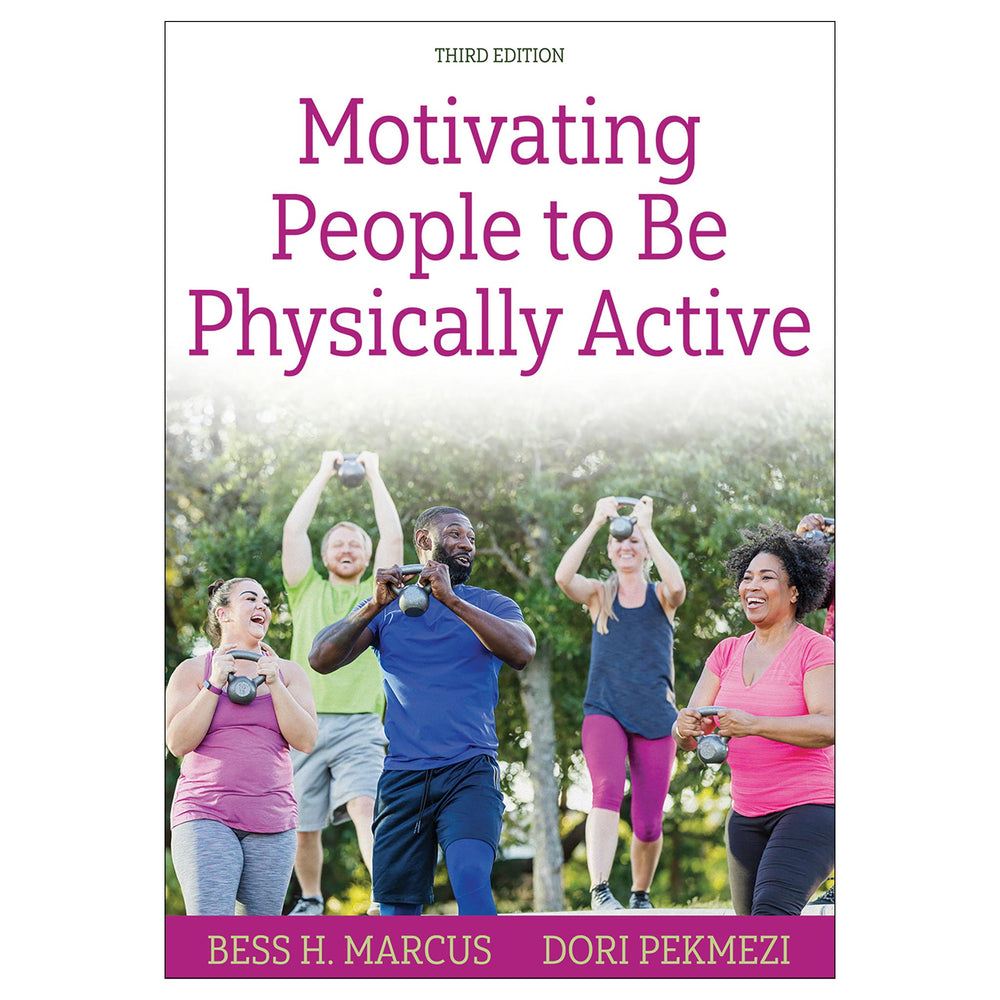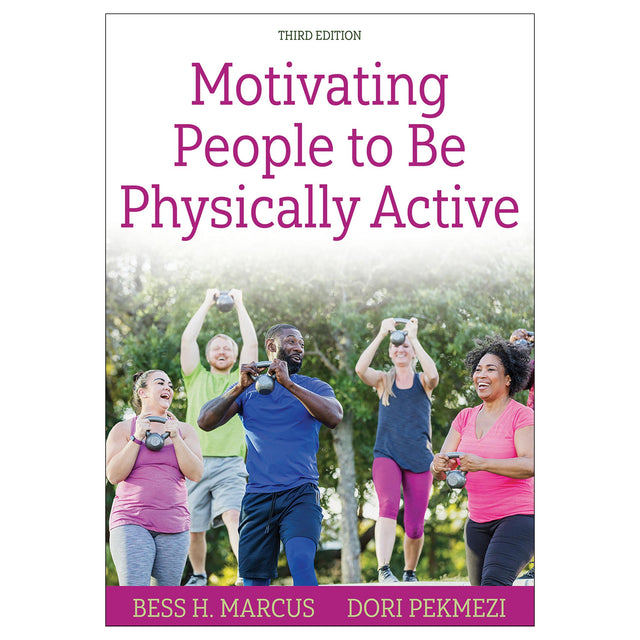Motivating People to Be Physically Active 3rd Edition epub
Author: Bess H. Marcus, Dori Pekmezi
$68.95 CAD
Access Duration: 10 Years
Updated with recent physical activity prevalence data and intervention studies, the text will help readers will understand the research on physical activity behavior and gain perspective on the importance of theory-based interventions for the promotion of a physically active lifestyle. Public health recommendations are presented with updated guidance from Physical Activity Guidelines for Americans, and new content emphasizes socioecological factors and mediators of behavior change, along with examples of inclusive, low-cost activities that can be performed in a variety of settings.
Based on the five-stage model of motivational readiness for behavior change, the text will help readers learn to measure and assess patterns of physical activity and physical fitness, then apply appropriate interventions in individual, group, work site, and community settings. Relevant for healthy adults as well as special populations, including adults with chronic physical or psychological conditions, the book also incorporates the use of technology-supported interventions such as wearable fitness trackers.
Five case studies of successful community and work site programs offer creative starting points for designing interventions and serve as practical examples for putting theory into practice with stage-specific strategies for motivating a variety of participants. Further assisting readers are reproducible questionnaires, worksheets, and logs that can be used as tools to assist clients with their transition to more active living.
Motivating People to Be Physically Active, Third Edition, is the essential resource for learning to assess readiness for change and design effective intervention programs that will educate and encourage others to lead a more active and healthier lifestyle.
Earn continuing education credits/units! A continuing education exam that uses this book is also available. It may be purchased separately or as part of a package that includes both the book and exam.
Audience
Reference for health and fitness professionals, health promotion professionals, exercise physiologists, health care professionals, public health professionals, physical educators, and physical activity researchers.Chapter 1. Describing Physical Activity Interventions
Physical Activity Recommendations
Definitions of Physical Activity, Exercise, and Physical Fitness
Physical Activity Interventions
Theoretical Models
Motivational Readiness for Behavior Change
Conclusion
Chapter 2. The Stages of Motivational Readiness for Change Model
Motivational Readiness and the Stages of Change
Match Treatment Strategies to Stages of Change
Processes of Behavior Change
Conclusion
Chapter 3. Integrating Other Psychological Theories and Models
Learning Theory
Decision-Making Theory
Behavioral Choice Theory
Social Cognitive Theory
Ecological Model
Relapse Prevention Model
Conclusion
Chapter 4. Putting Theories to Work by Looking at Mediators of Change
Consider Mediators of Physical Activity Behavior Change
Factors That Enhance Physical Activity
Unlock the “Black Box”
Conclusion
Chapter 5. Using the Stages Model for Successful Physical Activity Interventions
Imagine Action: A Community-Based Program
Jump Start to Health: A Workplace-Based Study
Jump Start: A Community-Based Study
Project Active: A Community-Based Study
Project STRIDE: A Community-Based Study
Step Into Motion: A Community-Based Study
Conclusion
Part II. Applications
Chapter 6. Assessing Physical Activity Patterns and Physical Fitness
Discovering Patterns of Physical Activity Behavior
Determining Intensity Level
Tracking Physical Activity Behavior
Assessing Fitness
Assessing Physical Activity and Fitness in Group Settings
Conclusion
Chapter 7. Using the Stages Model in Individual Counseling
Physical Readiness
Physical Activity History
Psychological Readiness
Confidence
Set Short- and Long-Term Goals
Measure Success
Conclusion
Chapter 8. Using the Stages Model in Group Counseling Programs
Leading a Stage-Based Group
Learning From a Sample Stage-Based Curriculum
Assessing Your Effectiveness as a Leader
Conclusion
Chapter 9. Using the Stages Model in Work Site Programs
Building Support for Your Program
Assessing Motivational Readiness
Choosing Your Target Audience
Reaching Your Target Audience
Developing Stage-Matched Materials
Focusing on Moderate-Intensity Activity
Planning Events
Adding Incentives for Participation
Conclusion
Chapter 10. Using the Stages Model in Community Programs
Assessing the Community’s Readiness for Change
Reaching Individuals Within a Community
Developing Stage-Matched Messages
Using a Media-Based Approach to Reach Your Target Audience
Working With Community Leaders to Reach Your Target Audience
Conclusion
Appendix A. Questionnaires
Appendix B. Resources
Using the Stages Model for Group-Based Physical Activity Programs
Using the Stages Model for Successful Physical Activity Interventions
All ancillaries are free to adopting instructors through HKPropel.
Instructor guide. Includes a sample syllabus, chapter objectives, lecture notes, sample discussion topics, classroom activity ideas, group project ideas, and additional resources.





